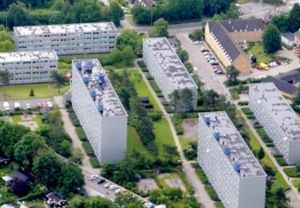News
Danish municipality splitting up housing area to get it on ’Ghetto List’
This article is more than 7 years old.
Helsingør mayor doesn’t think move will stigmatise citizens in area

Nøjsomhed: bound for the ‘Ghetto List’ (photo: Områdesekretariat Helsingør)
Over the past few months, Benedikte Kiær, the mayor of Helsingør Municipality, has worked towards splitting a housing area so that one part can be placed on the contentious ‘Ghetto List’.
Now, the Transport and Housing Ministry has complied with her wishes and split Helsingør Syd, the south side of the municipality, into two parts: the area by Nøjsomhed/Sydvej and Vapnagaard.
Significantly, the former lives up to the criteria of the government’s annual ghetto list, which is due to be released on December 1.
“We don’t want a ghetto, we already have one. And now it just needs to get the label it deserves.” Kiær told TV2 News.
“Now a spade will be called a spade and Vapnagaard won’t be a vulnerable district anymore.”
READ MORE: Crime in ‘ghettos’ down sharply, figures show
Reputation and resources
Kiær said that the reason for the split is that the entirety of Helsingør Syd has been on the controversial list of vulnerable housing areas – the step just beneath the controversial ghetto list.
The Nøjsomhed/Sydvej housing area, which has a high number of residents who are not ethnically Danish and struggle with unemployment, has dragged the surrounding areas down. Kiær contends that the split will mean the five other areas won’t be on the vulnerable neighbourhood list anymore.
It also means the municipality will only need to focus on the 1,100 citizens living in Nøjsomhed, rather than the 6,000 residing in Helsingør Syd.










































